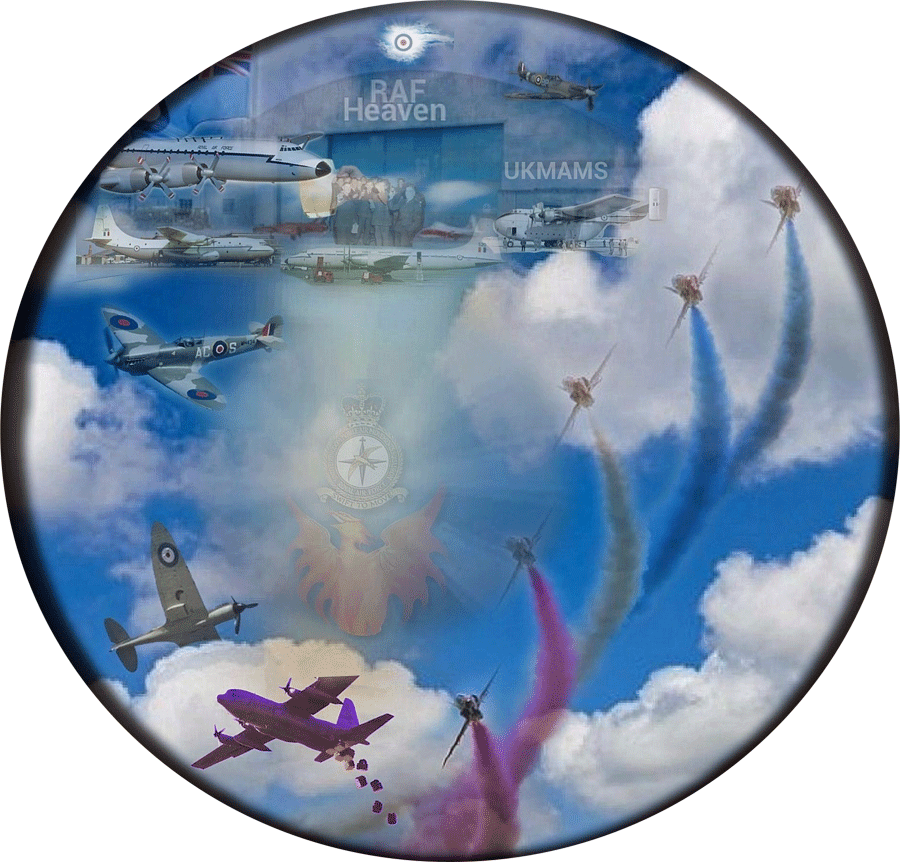
From: Ian Envis, Crowborough
Sent: Sunday, January 11, 2015 6:57 PM
Subject: David Eggleton
Very sad news of Dave Egg's passing, this morning 11th January. One of life's true gentlemen, a mentor to me and many others in both life skills and the art of being a mover and team player. The RAF, Movers and life in general has lost a wonderful man.
Sent: Sunday, January 11, 2015 6:57 PM
Subject: David Eggleton
Very sad news of Dave Egg's passing, this morning 11th January. One of life's true gentlemen, a mentor to me and many others in both life skills and the art of being a mover and team player. The RAF, Movers and life in general has lost a wonderful man.
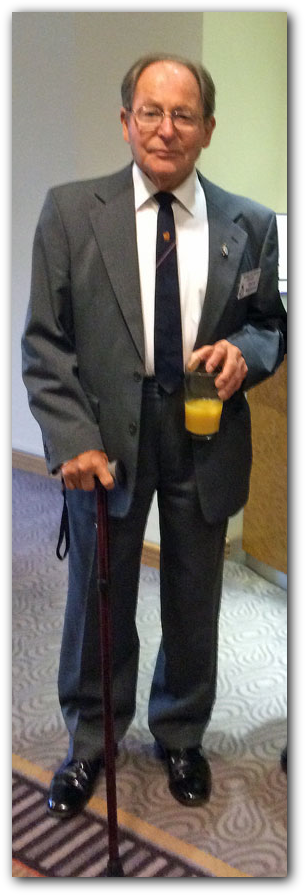
From: Tim Newstead, Bourton-on-the-Water, Glos
Sent: Monday, January 12, 2015 8:51 AM
To: Howie Bumford, Carterton, Oxon
Subject: David Eggleton
Dear Howie,
Like so very many others, I guess, I was deeply saddened to hear the news of Dave Egg’s passing. He was a lovely man, a real gentleman and a great guy to work with - both as a subordinate and as his boss (he took great delight in pointing out to me that I was the only one where he had once written a F6442 ACR on me when I worked for him and, years later, I had written one for him when the roles were reversed!). Very few colleagues in my experience were held in such high respect - coupled with great affection - as David Eggleton; this place is the poorer for his passing.
Please pass on our condolences to Jeff and his family.
Kind regards
Tim Newstead
Sent: Monday, January 12, 2015 8:51 AM
To: Howie Bumford, Carterton, Oxon
Subject: David Eggleton
Dear Howie,
Like so very many others, I guess, I was deeply saddened to hear the news of Dave Egg’s passing. He was a lovely man, a real gentleman and a great guy to work with - both as a subordinate and as his boss (he took great delight in pointing out to me that I was the only one where he had once written a F6442 ACR on me when I worked for him and, years later, I had written one for him when the roles were reversed!). Very few colleagues in my experience were held in such high respect - coupled with great affection - as David Eggleton; this place is the poorer for his passing.
Please pass on our condolences to Jeff and his family.
Kind regards
Tim Newstead
From: Bill Girdwood, Carlisle
Sent: Monday, December 22, 2014 2:47 AM
Subject: Re: UKMAMS OBA OBB #122214
Dear Tony,
Thank you so much for the latest newsletter and the many enjoyable items it contains!! (All shout ' Arrogant Bastard" together!) In particular I was struck by the Trade Group 18B movie of 2006. It strikes me that nothing has radically changed since 1944, except that the handling aids have improved! Nevertheless, it is extremely well put together and very helpful to recruiters, I have no doubt.
Tony: thank you once again for all the hard work and imagination which you put in to keep everyone in touch. I wish you and yours and all Movers everywhere no matter where they may now be, the happiest and most peaceful of Christmases and may the New Year bless us all with good health, good fortune and much happiness!!
Bill Girdwood
Sent: Monday, December 22, 2014 2:47 AM
Subject: Re: UKMAMS OBA OBB #122214
Dear Tony,
Thank you so much for the latest newsletter and the many enjoyable items it contains!! (All shout ' Arrogant Bastard" together!) In particular I was struck by the Trade Group 18B movie of 2006. It strikes me that nothing has radically changed since 1944, except that the handling aids have improved! Nevertheless, it is extremely well put together and very helpful to recruiters, I have no doubt.
Tony: thank you once again for all the hard work and imagination which you put in to keep everyone in touch. I wish you and yours and all Movers everywhere no matter where they may now be, the happiest and most peaceful of Christmases and may the New Year bless us all with good health, good fortune and much happiness!!
Bill Girdwood
From: Steve Tomlinson, Brisbane, QLD
Sent: Monday, January 19, 2015 7:11 PM
Subject: Dave Eggleton
I first met Dave on my first encounter with Air Movements, at the RAFMS, way back in July ‘83. We used to run together some lunchtimes and I certainly enjoyed his company. Movements being a tight knit community, we crossed paths on many occasions during my time in the Service, always enjoying his updates of who was doing what & where. I found him to be a gentleman in the true sense of the word and he was one of the “Lion’s” of the Movements world. A man with immense knowledge, whom everyone respected and a patience with us, young, junior officers who were always in a hurry to change the world! I am sure he will be missed by all and I will certainly be raising a glass to his memory, out here in Australia, both tomorrow and on the 16th February.
Kindest regards
Steve
Sent: Monday, January 19, 2015 7:11 PM
Subject: Dave Eggleton
I first met Dave on my first encounter with Air Movements, at the RAFMS, way back in July ‘83. We used to run together some lunchtimes and I certainly enjoyed his company. Movements being a tight knit community, we crossed paths on many occasions during my time in the Service, always enjoying his updates of who was doing what & where. I found him to be a gentleman in the true sense of the word and he was one of the “Lion’s” of the Movements world. A man with immense knowledge, whom everyone respected and a patience with us, young, junior officers who were always in a hurry to change the world! I am sure he will be missed by all and I will certainly be raising a glass to his memory, out here in Australia, both tomorrow and on the 16th February.
Kindest regards
Steve
He had class in any environment, style to move freely in any social situation and a fantastic personality. I think we can all say that Dave was the embodiment of all that is good about a single human being - furthermore, throughout his life he could always be trusted as a confident and a friend.
Through Howie and Bryan, I, and many others, have been kept apprised of the debilitating medical challenges faced by Dave which regrettably so impacted on his outlook on life. The news over the past 4 weeks has been depressing, suggesting he was suffering and in pain. All that is now past - may he rest in peace, safe journey to the land of the gods.
To Jeff his son, his family and friends (especially Howie and Bryan) may I add a special mention for Barbara, my sincere and deepest condolences which are mirrored by those from Sue - we both had the good fortune to know Dave and be considered friends. Importantly, you collectively have helped Dave meet his maker with dignity and compassion. He is gone but not forgotten.
With much sadness,
Ian & Sue Envis
Through Howie and Bryan, I, and many others, have been kept apprised of the debilitating medical challenges faced by Dave which regrettably so impacted on his outlook on life. The news over the past 4 weeks has been depressing, suggesting he was suffering and in pain. All that is now past - may he rest in peace, safe journey to the land of the gods.
To Jeff his son, his family and friends (especially Howie and Bryan) may I add a special mention for Barbara, my sincere and deepest condolences which are mirrored by those from Sue - we both had the good fortune to know Dave and be considered friends. Importantly, you collectively have helped Dave meet his maker with dignity and compassion. He is gone but not forgotten.
With much sadness,
Ian & Sue Envis
From: Bruce Holliday
Sent: Tuesday, December 23, 2014 12:12 PM
Subject: RAF Mystery Photo 060509
Sent: Tuesday, December 23, 2014 12:12 PM
Subject: RAF Mystery Photo 060509
From: Keri Eynon, Thatcham, Berks
Sent: Wednesday, January 21, 2015 7:33 AM
Subject: Dave Eggleton
Tony, it was with deep sadness that we learned of the death of Dave. He was a perfect gentleman, a term that is often used, but in his case how true. I, as I am sure many others will, have a number of fond memories of him. From my first meeting with him on UKMAMS at Abingdon in 1971 to playing rugby with him at Lyneham, meeting him at Gibraltar and playing tennis with him there to finally working under him at the Movements School at Brize Norton.
I know his legacy will live on and he will be sorely missed and remembered by one and all with fondness for the way he was ever ready with advice and help to those who worked with him and shared other times as well. My thoughts, and those of my wife Mary, are with his family at this time as they come to terms with the loss of their loved one. Hopefully they will, as time passes, come to be blessed with the joy and thanksgiving of being a part of his life and all he achieved with it.
Keri
Sent: Wednesday, January 21, 2015 7:33 AM
Subject: Dave Eggleton
Tony, it was with deep sadness that we learned of the death of Dave. He was a perfect gentleman, a term that is often used, but in his case how true. I, as I am sure many others will, have a number of fond memories of him. From my first meeting with him on UKMAMS at Abingdon in 1971 to playing rugby with him at Lyneham, meeting him at Gibraltar and playing tennis with him there to finally working under him at the Movements School at Brize Norton.
I know his legacy will live on and he will be sorely missed and remembered by one and all with fondness for the way he was ever ready with advice and help to those who worked with him and shared other times as well. My thoughts, and those of my wife Mary, are with his family at this time as they come to terms with the loss of their loved one. Hopefully they will, as time passes, come to be blessed with the joy and thanksgiving of being a part of his life and all he achieved with it.
Keri
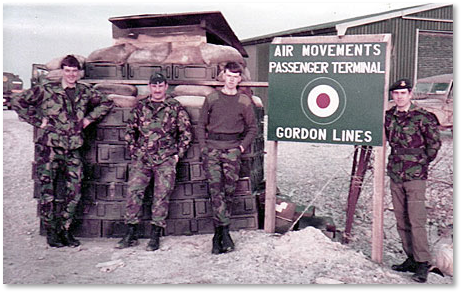
Can't give you info about the guys in the photo but Gordon Lines was the RAF transport head at RAF Stanley. So the guys in the photo will all be movers probably on a 4 month det.
I transported through there in Feb 1985 as far as I can remember it was situated over Boxer bridge just about opposite Coastal 1. When I landed in the Falklands, MPA (as it was then, still an airfield not a tri-service 'complex') was barely built. The 2 main contractors WTW and LMA were building furiously but really the only operational building was the main hangar.
After landing you 'arrived' on the island and, as RAF boarded a bus to transport to Gordon Lines. There you were told where you were to live and either bussed to your Coastel or in my case told to walk as I was in Coastel 1 and could walk from Gordon Lines.
I transported through there in Feb 1985 as far as I can remember it was situated over Boxer bridge just about opposite Coastal 1. When I landed in the Falklands, MPA (as it was then, still an airfield not a tri-service 'complex') was barely built. The 2 main contractors WTW and LMA were building furiously but really the only operational building was the main hangar.
After landing you 'arrived' on the island and, as RAF boarded a bus to transport to Gordon Lines. There you were told where you were to live and either bussed to your Coastel or in my case told to walk as I was in Coastel 1 and could walk from Gordon Lines.
I remember as I walked down the hill to Boxer bridge a Chinook appeared over the horizon very low level, got caught up in the receiver aerials of the receiver site and crash landed in front of me, only been on the island for a couple of hours!! I remember a crew member getting out and shouting BASTARD! at the top of his voice.
Happy days, Colin Robins, Frank Cook, Andy Turnbull, Ray Davidson.........
Cheers
Doc Holliday
WO (Rtd) non-Mover - ex-Radar
Happy days, Colin Robins, Frank Cook, Andy Turnbull, Ray Davidson.........
Cheers
Doc Holliday
WO (Rtd) non-Mover - ex-Radar
New members who have joined us recently:

RAF
Andy Spinks, Dubai, United Arab Emirates
Steve Croston, Twyford, Reading, Berks, UK
Steve Croston, Twyford, Reading, Berks, UK

RAAF
Christopher Wootton, Collinsville, QLD, Australia
Jim Halloran, Roleystone, Western Australia
Jim Halloran, Roleystone, Western Australia

RNZAF
Brigitte Troughton, El Geneina, Sudan
Welcome to the OBA!
From: Howie Bumford, Carterton, Oxon
Sent: Wednesday, January 21, 2015 12:49 PM
Subject: David Eggletons Funeral
Today I was privileged enough to be invited to Dave's funeral which was held at the South Oxford Crematorium at Garsford. The crematorium held about 100 guests. Apart from family and close friends there were guests representing his Golf Club, Cricket Club, invited RAF Movements and members of St Helens Church in Abingdon.
It was a great service which was highlighted by his son Jeff's Eulogy to his Dad, which included excerpts from those e-mails sent in by you all, including the "Exocet" story [see the tribute from Glenn Richardson in the scrolling area above]. It was a heart-warming send off for a great man. The wake was held at Millets Farm at Frilford Heath.
(The memorial service will be at St Helen’s Church in Abingdon, 1400 Hrs on Monday 16th February.)
Howie
Sent: Wednesday, January 21, 2015 12:49 PM
Subject: David Eggletons Funeral
Today I was privileged enough to be invited to Dave's funeral which was held at the South Oxford Crematorium at Garsford. The crematorium held about 100 guests. Apart from family and close friends there were guests representing his Golf Club, Cricket Club, invited RAF Movements and members of St Helens Church in Abingdon.
It was a great service which was highlighted by his son Jeff's Eulogy to his Dad, which included excerpts from those e-mails sent in by you all, including the "Exocet" story [see the tribute from Glenn Richardson in the scrolling area above]. It was a heart-warming send off for a great man. The wake was held at Millets Farm at Frilford Heath.
(The memorial service will be at St Helen’s Church in Abingdon, 1400 Hrs on Monday 16th February.)
Howie
From: Steve Croston, Twyford, Berks
Sent: Friday, December 26, 2014 5:49 AM
Subject: Belfast Model
Hi Tony,
Another great edition of the OBA newsletter. Although I have obviously missed the last post for Christmas greetings, I would like to register them anyway to all current and past Movers.
The article caught my eye about the model of the Belfast for sale. I would swear that this was located at the RAFMS at Brize Norton whilst I was a member of staff there, even down to the perspex cut-away section on the port side of the fuselage. Additionally it was there since 1974 when we still had these magnificent a/c in service. I particularly remember the crate in the photo which used to be kept in H30 behind the offices.
Memory must be fading somewhat as I am getting on for 60 now but I don't remember the vehicles that are part of this set, if it is in fact the one I believe it to be. To me, this is part of our history and belongs on display in a museum or such like. Does such a place exist that this could be returned home to, if anyone knows?
I have just emailed Kenneth the seller for an idea of the asking price as Walton on Thames is not too far from LHR where I work but if its out of my price range, I would certainly be up for a contribution towards the cost if others wish to take part to allow this historic model to find its rightful home.
Can we find a home for it between us? Come on guys lets pull together and make a dedication to remember our heritage somewhere it will be appreciated again. Always happy to act as a go between and arrange collection etc.
Brgds to all,
Steve.
Sent: Friday, December 26, 2014 5:49 AM
Subject: Belfast Model
Hi Tony,
Another great edition of the OBA newsletter. Although I have obviously missed the last post for Christmas greetings, I would like to register them anyway to all current and past Movers.
The article caught my eye about the model of the Belfast for sale. I would swear that this was located at the RAFMS at Brize Norton whilst I was a member of staff there, even down to the perspex cut-away section on the port side of the fuselage. Additionally it was there since 1974 when we still had these magnificent a/c in service. I particularly remember the crate in the photo which used to be kept in H30 behind the offices.
Memory must be fading somewhat as I am getting on for 60 now but I don't remember the vehicles that are part of this set, if it is in fact the one I believe it to be. To me, this is part of our history and belongs on display in a museum or such like. Does such a place exist that this could be returned home to, if anyone knows?
I have just emailed Kenneth the seller for an idea of the asking price as Walton on Thames is not too far from LHR where I work but if its out of my price range, I would certainly be up for a contribution towards the cost if others wish to take part to allow this historic model to find its rightful home.
Can we find a home for it between us? Come on guys lets pull together and make a dedication to remember our heritage somewhere it will be appreciated again. Always happy to act as a go between and arrange collection etc.
Brgds to all,
Steve.
Update 21st January
I e-mailed Kenneth who said he had received several offers and the highest one was £100.00. He wants to wait until the end of January before accepting but his first wish would be to someone from a museum or such like, if there is such a thing - Steve
I e-mailed Kenneth who said he had received several offers and the highest one was £100.00. He wants to wait until the end of January before accepting but his first wish would be to someone from a museum or such like, if there is such a thing - Steve
From: Alex Masson, Chelmsford
Sent: Sunday, January 11, 2015 8:27 AM
Subject: Update
Hello Tony,
We simply didn't get around to sending ALL our Christmas greetings out this year! Throughout November and December Heather, alias 'Legs' (as christened by our old friend, the late Squadron Leader Jack Riley) has been in and out of A & E, Clinics, Dr Surgeries and Emergency Assessment Units in an attempt to control her Heart which has been overspeeding and causing problems. Her condition is not uncommon and is referred to as ‘Atrial Fibrillation’ which can result in stroke etc., if not rectified. This has also caused her to resign from her job as she keeled over on two occasions before Christmas while working at the Hospital. She is 76 and it is about time she gave up working even though she enjoys it.
We spent Christmas Eve from 10.00hrs to 18.00hrs at the Hospital with 'Legs' on monitors - Finally she has a new cocktail of medicines and since Christmas Day has been fairly stable ... No alcohol! No caffeine! No stress!.... fingers crossed!
Sent: Sunday, January 11, 2015 8:27 AM
Subject: Update
Hello Tony,
We simply didn't get around to sending ALL our Christmas greetings out this year! Throughout November and December Heather, alias 'Legs' (as christened by our old friend, the late Squadron Leader Jack Riley) has been in and out of A & E, Clinics, Dr Surgeries and Emergency Assessment Units in an attempt to control her Heart which has been overspeeding and causing problems. Her condition is not uncommon and is referred to as ‘Atrial Fibrillation’ which can result in stroke etc., if not rectified. This has also caused her to resign from her job as she keeled over on two occasions before Christmas while working at the Hospital. She is 76 and it is about time she gave up working even though she enjoys it.
We spent Christmas Eve from 10.00hrs to 18.00hrs at the Hospital with 'Legs' on monitors - Finally she has a new cocktail of medicines and since Christmas Day has been fairly stable ... No alcohol! No caffeine! No stress!.... fingers crossed!
We intended spending Christmas with our daughter and family at Tunbridge Wells but this had to be cancelled so we had no Christmas Dinner arranged - until our neighbours, who were already catering for eight, brought two plates around with goose, turkey, pheasant and all the trimmings - that was thoroughly enjoyed and greatly appreciated!
Our family turned up on Boxing Day and stayed a few days then we had a quiet New Year’s night. Very different from previous years.
Eventually Heather was admitted to Hospital on the 7th Jan for a pre-assessment, then on the 9th Jan in again for the DC Cardioversion procedure. This is where the heart is ‘bump started’ by electric shock and (hopefully) kicked back into normal rhythm. This treatment can be very successful so we are hopeful that things will improve now. Today, 11th Jan she appears to be holding her own, though for two days has been suffering the effects of the anaesthetic
Happy New Year to you and we would like to wish a belated Season’s Greetings and Happy New Year to All Movers. Let’s hope 2015 will be good for all of us.
Heather and Alex
Our family turned up on Boxing Day and stayed a few days then we had a quiet New Year’s night. Very different from previous years.
Eventually Heather was admitted to Hospital on the 7th Jan for a pre-assessment, then on the 9th Jan in again for the DC Cardioversion procedure. This is where the heart is ‘bump started’ by electric shock and (hopefully) kicked back into normal rhythm. This treatment can be very successful so we are hopeful that things will improve now. Today, 11th Jan she appears to be holding her own, though for two days has been suffering the effects of the anaesthetic
Happy New Year to you and we would like to wish a belated Season’s Greetings and Happy New Year to All Movers. Let’s hope 2015 will be good for all of us.
Heather and Alex
From: Joseph Gillis, Grand Mira South, NS
Sent: Friday, January 09, 2015 9:21 AM
Subject: Ahead of its time even now perhaps?
A new concept, flown in 1950. The prototype was developed from a C-119 aircraft. Only one prototype was built and flown, with first flight on 11 August 1950. Eventually scrapped.
Cheers
Joe
Sent: Friday, January 09, 2015 9:21 AM
Subject: Ahead of its time even now perhaps?
A new concept, flown in 1950. The prototype was developed from a C-119 aircraft. Only one prototype was built and flown, with first flight on 11 August 1950. Eventually scrapped.
Cheers
Joe
From: Gerry Davis, Bedminster
Sent: Saturday, December 13, 2014 9:29 AM
Subject: New book being published
Hi Tony,
Around February time my new book "My Service To Aviation" will be on the shelves. I have the notion that this will be one of the few books, if not the only one published, which covers the total service of an ex RAF Boy Entrant, through his air movements postings, then covering his civil aviation trials and tribulations, and much more.
Best wishes
Gerry Davis
Sent: Saturday, December 13, 2014 9:29 AM
Subject: New book being published
Hi Tony,
Around February time my new book "My Service To Aviation" will be on the shelves. I have the notion that this will be one of the few books, if not the only one published, which covers the total service of an ex RAF Boy Entrant, through his air movements postings, then covering his civil aviation trials and tribulations, and much more.
Best wishes
Gerry Davis
(Looking forward to seeing it Gerry - please let us know when it's published and where we can get a copy!)
From: John Holloway, Shrewsbury
Sent: Tuesday, January 13, 2015 4:30 PM
Subject: NSRAF Cosford
Hi Tony,
It was our first Cosford meeting for the year 2015 today. Even tho’ there has been a lot of "winter bugs" flying around we had a good turnout. Our guest speaker was Allan Scott, a 93 year old veteran of WW2 who gave us a fantastic talk on his time in the RAF.
As a youngster he was set on flying and joined the RAF in 1940. After a number of setbacks he managed to get into flying training which was in a Miles Magister. Passing out as a Sergeant Pilot in late 1940, he was flying a Spitfire in the final days of The Battle of Britain with 124 Squadron at Biggin Hill. He had a few dogfights but the squadron was withdrawn for a rest period in Northern Scotland so that gave him more time to get used to flying a Spitfire. In November 1941 the squadron moved back to Biggin Hill and this was when the RAF was doing sorties over France shooting up targets of opportunity.
Sent: Tuesday, January 13, 2015 4:30 PM
Subject: NSRAF Cosford
Hi Tony,
It was our first Cosford meeting for the year 2015 today. Even tho’ there has been a lot of "winter bugs" flying around we had a good turnout. Our guest speaker was Allan Scott, a 93 year old veteran of WW2 who gave us a fantastic talk on his time in the RAF.
As a youngster he was set on flying and joined the RAF in 1940. After a number of setbacks he managed to get into flying training which was in a Miles Magister. Passing out as a Sergeant Pilot in late 1940, he was flying a Spitfire in the final days of The Battle of Britain with 124 Squadron at Biggin Hill. He had a few dogfights but the squadron was withdrawn for a rest period in Northern Scotland so that gave him more time to get used to flying a Spitfire. In November 1941 the squadron moved back to Biggin Hill and this was when the RAF was doing sorties over France shooting up targets of opportunity.
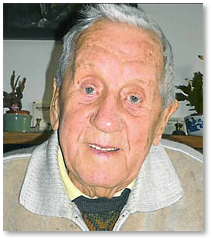
In 1942 he was posted to Malta and he and the rest of the squadron boarded the SS Empire Darwin which took them to Gibraltar. There waiting for them was the aircraft carrier HMS Eagle and on board were their Spitfires waiting for them, 36 altogether. None of them had ever seen or been aboard an aircraft carrier before. The Eagle sailed as near to Malta as it could to avoid detection and then they had to take-off as best they could and his description of this was quite fantastic; only a couple failed to take off safely. As they neared Malta it was beIng bombed by the Germans so they had to fight their way in as now they were getting short of fuel. No sooner had they landed, the Spitfires were refuelled and rearmed by ground crews and the kites were ready to go back into action within minutes.
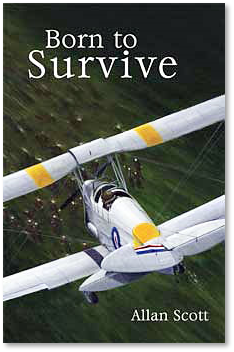
He told us of all the actions they had to endure; go after the bombers and avoid the ME109's plus the rotten conditions they had to live in and the lack of food. He said he lost over four stone (56 lbs) in the first few weeks.
I'm afraid we ran out of time for him to tell us more of his time in the RAF. In the mid-fifties he did two years at Habbaniya and flew the Hasting IRIS2 from UK to Gan via Aden but he will come to see us again to complete his fantastic story. He is recorded as an ACE having shot down over a dozen German aircraft and was awarded the DFM as a Sgt Pilot.
He flew over 80 different types of aircraft from that 150 mph Magister to a 1500 mph English Electric Lightning, also many American aircraft and even a German ME 109!
If you can get hold of his book "Born to Survive" then do so it is a definite must for everybody interested in his time in the RAF. He retired in 1976 as a Squadron Leader.
Cheers
John
I'm afraid we ran out of time for him to tell us more of his time in the RAF. In the mid-fifties he did two years at Habbaniya and flew the Hasting IRIS2 from UK to Gan via Aden but he will come to see us again to complete his fantastic story. He is recorded as an ACE having shot down over a dozen German aircraft and was awarded the DFM as a Sgt Pilot.
He flew over 80 different types of aircraft from that 150 mph Magister to a 1500 mph English Electric Lightning, also many American aircraft and even a German ME 109!
If you can get hold of his book "Born to Survive" then do so it is a definite must for everybody interested in his time in the RAF. He retired in 1976 as a Squadron Leader.
Cheers
John
From: Arthur Rowland, St Ives, Cambs
Sent: Friday, January 16, 2015 3:43 PM
Subject: The Worst Load
Hi Tony, a happy new year to you and your readers!
My worst load, well it was an offload really, and it was from a Shackleton For those who do not know this aircraft, it was a four engine maritime aircraft not usually known for carrying cargo.
Well to begin this story some weeks earlier I was on night duty in load control Malta, where we were anticipating the arrival of a Hastings aircraft from El Adem with returning Maltese soldiers from exercise in Libya. Sadly, we learned that the aircraft had crashed on take off with a heavy loss of life. Many of the bodies were recovered to Malta by Hastings a few days later, but not all.
Sent: Friday, January 16, 2015 3:43 PM
Subject: The Worst Load
Hi Tony, a happy new year to you and your readers!
My worst load, well it was an offload really, and it was from a Shackleton For those who do not know this aircraft, it was a four engine maritime aircraft not usually known for carrying cargo.
Well to begin this story some weeks earlier I was on night duty in load control Malta, where we were anticipating the arrival of a Hastings aircraft from El Adem with returning Maltese soldiers from exercise in Libya. Sadly, we learned that the aircraft had crashed on take off with a heavy loss of life. Many of the bodies were recovered to Malta by Hastings a few days later, but not all.
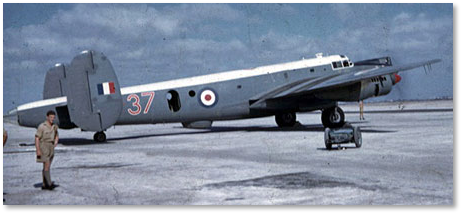
It was some weeks later the remaining 4 bodies were returned to Malta in the body of a Shackleton aircraft. This airframe was parked well away from the passenger terminal, and the DAMO of the day (Brian Johnson) said "Sarge", you and I alone will do the offload", which we did with as much dignity as possible, removing 4 coffins, not all of which were in good condition, from a very enclosed fuselage. A sad day, but "movers" could, and do, turn their hands to all events.
All the best.
Arthur
All the best.
Arthur
From: Michael Hunter, Portland, ON
Sent: Friday, January 16, 2015 3:52 PM
Subject: The Worst Load
Sent: Friday, January 16, 2015 3:52 PM
Subject: The Worst Load
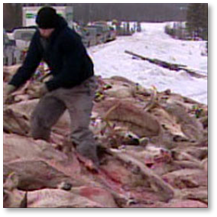
At 2 AMU Trenton the Ops Hurricane loads for Alert were pretty rough.
The worst off-base loads were probably the caribou carcasses loaded in Fort Chimo in 1985.
Regards
Michael
The worst off-base loads were probably the caribou carcasses loaded in Fort Chimo in 1985.
Regards
Michael
From: Ian Place, Meanwood, West Yorks
Sent: Friday, January 16, 2015 4:11 PM
Subject: The Worst Load
Tony,
The worst load I can come up with is 2 Wessex helicopters on a Belfast CC MK1. Ian Berry must have a photo or 2 with that load shown. I know I did about 5 of these horrible loads and they all seem to come out of Norway; Bardufoss, Bodo, or somewhere else out of that cold winter country.
On 18/19 March 1972, Gerry Keyworth, Jimmy Jones, Tim Newstead, DK Henderson, myself and an unknown F/Sgt spent all night loading this 2 X Wessai, finished just in time for the fully refreshed night stop crew to take it back to Culdrose.
Ian
Sent: Friday, January 16, 2015 4:11 PM
Subject: The Worst Load
Tony,
The worst load I can come up with is 2 Wessex helicopters on a Belfast CC MK1. Ian Berry must have a photo or 2 with that load shown. I know I did about 5 of these horrible loads and they all seem to come out of Norway; Bardufoss, Bodo, or somewhere else out of that cold winter country.
On 18/19 March 1972, Gerry Keyworth, Jimmy Jones, Tim Newstead, DK Henderson, myself and an unknown F/Sgt spent all night loading this 2 X Wessai, finished just in time for the fully refreshed night stop crew to take it back to Culdrose.
Ian
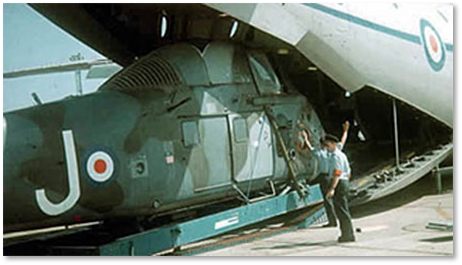
From: Charles Gibson, Monifieth, Angus
Sent: Friday, January 16, 2015 4:16 PM
Subject: The Worst Load
Sent: Friday, January 16, 2015 4:16 PM
Subject: The Worst Load
From: Pauline Andrews, Swindon
Sent: Friday, January 16, 2015 4:59 PM
Subject: The Worst Load
Hi Tony
Not necessarily the worst load, but the most ingenious way of unloading (from FS Paddy Power): A periscope, from Lyneham to Dubai. 55 feet long. No handling aids at Dubai suitable to offload this.
Paddy’s solution? 3 FMCs, as I recall, an aircraft tug and a crane. Park two FMCs next to each other, with the third end on. Raise FMCs to Herc ramp height. Push periscope off aircraft, onto FMCs. Tow aircraft away; utilise crane to lift periscope onto lorry for transport to destination (how do you insert a periscope into a submarine? That’s still a puzzle to me…). And return to the hotel, where the crew have been in the swimming pool all day.
Best
Pauline
Sent: Friday, January 16, 2015 4:59 PM
Subject: The Worst Load
Hi Tony
Not necessarily the worst load, but the most ingenious way of unloading (from FS Paddy Power): A periscope, from Lyneham to Dubai. 55 feet long. No handling aids at Dubai suitable to offload this.
Paddy’s solution? 3 FMCs, as I recall, an aircraft tug and a crane. Park two FMCs next to each other, with the third end on. Raise FMCs to Herc ramp height. Push periscope off aircraft, onto FMCs. Tow aircraft away; utilise crane to lift periscope onto lorry for transport to destination (how do you insert a periscope into a submarine? That’s still a puzzle to me…). And return to the hotel, where the crew have been in the swimming pool all day.
Best
Pauline
From: David Powell, Princes Risborough
Sent: Friday, January 16, 2015 5:56 PM
Subject: Nightmare Loads
Hi Tony,
What do we mean by worst? I had some challenging loads on UKMAMS, but none I would really call 'bad' or the worst. E.g. a late evening loading at Boscombe Down of 2 x Naval Wessex, which were presented on non-air portable Queen Mary sledges (no little metal skates at the end of the skids to ease the sledge over the rollers). Bob Turner solved the missing wiggly skate problem after a search of the hanger located a couple of flat steel plates about a foot square, which if tucked into the hanger door tracking and then run-over with a 12,000lb fork-lift became nicely curved. As well as the Wessex, there were their blade boxes, all the roller and timber dunnage for the offload In Ottawa, a Belfast FAP (the comprehensive one) 4 triples for the MAMS team and GEs on the ramp, three of which had one seat folded down to create off-set double seats, and finally, I should have mentioned a Wasp Helicopter which shared the ramp with the seats. The Wasp was at an angle so that the tail boom just snuck in between the 2 Wessex when the ramp was closed. And, yes the aircraft did trim!
Sent: Friday, January 16, 2015 5:56 PM
Subject: Nightmare Loads
Hi Tony,
What do we mean by worst? I had some challenging loads on UKMAMS, but none I would really call 'bad' or the worst. E.g. a late evening loading at Boscombe Down of 2 x Naval Wessex, which were presented on non-air portable Queen Mary sledges (no little metal skates at the end of the skids to ease the sledge over the rollers). Bob Turner solved the missing wiggly skate problem after a search of the hanger located a couple of flat steel plates about a foot square, which if tucked into the hanger door tracking and then run-over with a 12,000lb fork-lift became nicely curved. As well as the Wessex, there were their blade boxes, all the roller and timber dunnage for the offload In Ottawa, a Belfast FAP (the comprehensive one) 4 triples for the MAMS team and GEs on the ramp, three of which had one seat folded down to create off-set double seats, and finally, I should have mentioned a Wasp Helicopter which shared the ramp with the seats. The Wasp was at an angle so that the tail boom just snuck in between the 2 Wessex when the ramp was closed. And, yes the aircraft did trim!
But, for my 'worst', I would turn to my Gulf MAMS tour. This was the source for the worst one (or rather series) for me. Although a close second was a priority box which we were invited to ship via a Belfast from the Naval Docks in Bahrain to Singapore containing a very large minesweeper thingy. That was a very tight squeeze. Subsequently, we found out that the box had been sent as far a Bahrain by sea as in theory it wouldn't fit in a Belfast. As I said, a bit of a tight squeeze. However, for 'worst' it has to be the resupply runs by Argosy from Bahrain down to Muscat, Oman to load and then onto Salalah. The airfield at Muscat was still Bait al Falaj with the original runway - the one with a 6 degree bend a third of the way along to fit the runway into the valley - which ended in a cliff face. You left the way you came in or not at all.
The loads were a mixture of ammunition, 'stuff' and 'the passengers' for Salalah. The latter were usually mercenaries from Baluchistan, who came with their own personal weapons. The latter appeared to be variations of locally made Victorian sporting rifles. This was 1971, before AK47s were readily available at all good local DIY stores.
The loads were a mixture of ammunition, 'stuff' and 'the passengers' for Salalah. The latter were usually mercenaries from Baluchistan, who came with their own personal weapons. The latter appeared to be variations of locally made Victorian sporting rifles. This was 1971, before AK47s were readily available at all good local DIY stores.
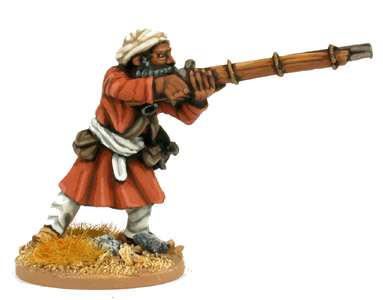
Briefing the passengers was interesting. First one had to inform them that the passenger toilet was broken so would they relieve themselves before boarding. The 'broken toilet' was mandatory following an unfortunate experience on an earlier run when our guests decided to use the facilities in the squat position, in turbulence. Another potential problem would have been trying to persuade our passengers to hand over their weaponry prior to boarding. Equivalent to insisting a Scottish regiment remove their kilts immediately prior to boarding.
The solution was that we did not bother. Instead I gave myself a secondary duty of O i/c Middle East Rare Fire Arms Historical Society. This gave me an excuse to meet my pax, examine and admire each of the precious family heirlooms prior to boarding to ensure that there was not a round still up the spout was well as checking that the magazine (if fitted) had been removed. Yet another twist was that many of our passengers had never flown before. Some would compensate for this with a pre-flight snack of shall we say 'interesting substances not normally served in the NAAFI'.
The solution was that we did not bother. Instead I gave myself a secondary duty of O i/c Middle East Rare Fire Arms Historical Society. This gave me an excuse to meet my pax, examine and admire each of the precious family heirlooms prior to boarding to ensure that there was not a round still up the spout was well as checking that the magazine (if fitted) had been removed. Yet another twist was that many of our passengers had never flown before. Some would compensate for this with a pre-flight snack of shall we say 'interesting substances not normally served in the NAAFI'.
Then it was down to Salalah to offload. This was done in about 15 minutes, 20 max, while parked behind a revetment of sand filled oil drums before the baddies could get in range to pop off an RPG. Prior to our arrival, the area around the airfield would have been swept by local militia being trained by our friends from Hereford but there were only a few of them, and they could only go out so far, hence the QTR, before the direct run back to Muharraq.
Now if you had asked for the 'worst load flown with?' Easy, 13 hours in the back of a Herc on a direct run back to UK from Nigeria apart from a refuel at Luqa, Malta, crammed in full para seat fit with 90 very sweaty large Welsh Guardsmen picked up straight out of a 3-week jungle training exercise. No contest!
Best wishes
David Powell
F Team UKMAMS and last OC Gulf MAMF 1971.
Now if you had asked for the 'worst load flown with?' Easy, 13 hours in the back of a Herc on a direct run back to UK from Nigeria apart from a refuel at Luqa, Malta, crammed in full para seat fit with 90 very sweaty large Welsh Guardsmen picked up straight out of a 3-week jungle training exercise. No contest!
Best wishes
David Powell
F Team UKMAMS and last OC Gulf MAMF 1971.
From: John Wickham, Dubai
Sent: Friday, January 16, 2015 6:22 PM
Subject: The Worst Load
I can remember Dad’s Funeral when someone read out about one of his loads, Rotor Blades I believe, I think from Changi or Tengah.
In all likelihood loaded into a Britannia, as the freight door was comparatively small and the blades were very long.
Sent: Friday, January 16, 2015 6:22 PM
Subject: The Worst Load
I can remember Dad’s Funeral when someone read out about one of his loads, Rotor Blades I believe, I think from Changi or Tengah.
In all likelihood loaded into a Britannia, as the freight door was comparatively small and the blades were very long.
From: Tony Saw, Ruskington, Sleaford, Lincs
Sent: Saturday, January 17, 2015 1:59 AM
Subject: The Worst Load
Tying a donkey down with lashing tape on an Andover in ‘69 whilst on Gulf MAMS - had to use a roll of tape for each leg (once we got it still) and a small cargo net once it laid down - that was fun!
Tony Saw
Sent: Saturday, January 17, 2015 1:59 AM
Subject: The Worst Load
Tying a donkey down with lashing tape on an Andover in ‘69 whilst on Gulf MAMS - had to use a roll of tape for each leg (once we got it still) and a small cargo net once it laid down - that was fun!
Tony Saw

We took off about 7.30 pm for a flight time of about a 1 hour and 20mins. We stayed at about 4000’ for the transit to Hamilton (about 80km south of Auckland) where we did an approach and overshoot. Then we turned east for Gisborne and began the climb to 12,000’ for the transit to Gisborne. At about 8000’ all hell broke loose in the back end! There was a sudden strong smell of petrol and it quickly became very strong. We all sensed it at once.
I tore down the back (I was up the front having coffee with the other three crew by then) and found a ‘sea of petrol’ running down the floor - clearly coming out of the GPU -“oh s**t’”. I quickly announced.
I tore down the back (I was up the front having coffee with the other three crew by then) and found a ‘sea of petrol’ running down the floor - clearly coming out of the GPU -“oh s**t’”. I quickly announced.
Upshot was that the unit had been loaded on the aircraft in a fully fuelled condition (although the AMS load paperwork did not subsequently confirm that - it showed a simple annotation of ‘fuel at correct level’). Hence, as soon as we started to pressurise the fuel started to expand, and at 8000’ or so, it simply gushed out of the overflow. End of the story was, we carried on to Gisborne, dropped off the load, and flew back to Auckland - landing uneventfully back by about 11.30pm.
We all realised we had come very close to being a massive fireball in the sky in an incident which probably only lasted a few minutes. But what a hairy few minutes they were. I had a ‘robust’ discussion with the movers next day as, clearly, it was a close call. That would have been about 1979 - wonder how that would have been handled in this day and age of better risk management practices and greater accountability? Nevertheless, it’s good to be able to tell the story as it might just help remind everybody that we have rules for very good professional reasons!
SQNLDR Lindsay Campbell RAAF (Ex 1SQN RNZAF Air Loadmaster).
We all realised we had come very close to being a massive fireball in the sky in an incident which probably only lasted a few minutes. But what a hairy few minutes they were. I had a ‘robust’ discussion with the movers next day as, clearly, it was a close call. That would have been about 1979 - wonder how that would have been handled in this day and age of better risk management practices and greater accountability? Nevertheless, it’s good to be able to tell the story as it might just help remind everybody that we have rules for very good professional reasons!
SQNLDR Lindsay Campbell RAAF (Ex 1SQN RNZAF Air Loadmaster).
From: Lindsay Campbell, Adelaide, SA
Sent: Saturday, January 17, 2015 4:26 AM
Subject: The Worst Load
Hi Tony - think I have one for you here!
It’s late in the afternoon at Whenuapai airbase in the north-west of Auckland city. The movers are prepping and loading our Andover CMk-1 (NZ7623) for an evening transit to Gisborne over on the west coast of the North Island. We will be making a run to drop off some ground support equipment for a ‘Wise Owl’ flying camp - the usual deployed flying camp from Wigram Airbase (historic home of RNZAF flying training down in Christchurch in the South Island, but it was closed and sold off some years ago now) near the end of the Pilots’ Ab-initio ‘wings’ course. Not quite sure why we weren’t going earlier but it might have been to combine some night hours training for the front end crew with the task. Anyway, part of the load was an aircraft ground power unit (GPU). It was loaded last and was just forward of the rear pax door - so about 2-3m forward of the Andover’s rear-opening doors/ramp etc.
Sent: Saturday, January 17, 2015 4:26 AM
Subject: The Worst Load
Hi Tony - think I have one for you here!
It’s late in the afternoon at Whenuapai airbase in the north-west of Auckland city. The movers are prepping and loading our Andover CMk-1 (NZ7623) for an evening transit to Gisborne over on the west coast of the North Island. We will be making a run to drop off some ground support equipment for a ‘Wise Owl’ flying camp - the usual deployed flying camp from Wigram Airbase (historic home of RNZAF flying training down in Christchurch in the South Island, but it was closed and sold off some years ago now) near the end of the Pilots’ Ab-initio ‘wings’ course. Not quite sure why we weren’t going earlier but it might have been to combine some night hours training for the front end crew with the task. Anyway, part of the load was an aircraft ground power unit (GPU). It was loaded last and was just forward of the rear pax door - so about 2-3m forward of the Andover’s rear-opening doors/ramp etc.
The first thing that crossed my mind was all the inverters (and tiny electrical sparks) under the floor area toward the rear of the aircraft - “oh s**t”, I again announced. I quickly relayed the situation to the captain, told him we needed to crack the back door and ramp to let the fuel out ‘pronto’. He was cool I have to say for a quite young fella (only about 22 years of age as I recall). He slowed the aircraft to keep the nose up enough to keep the fuel ‘running backwards’ down the aircraft floor. Then depressurised (we were just below 10,000’) so we could crack the ramp and doors. Then we cracked the doors and out went all the loose fuel. At this point, I also noticed that once we depressurised the fuel spill stopped. Clearly, we had an overfilled GPU instead of the regulated - I think max fuel tank of ¾ tank for an air cargo movement of GPUs (but I am sure a current mover can correct me on those details).
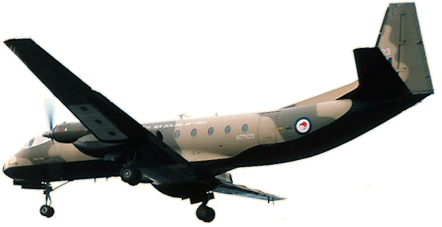
New Zealand Considers Replacing Ageing Hercules Fleet With Bigger Boeing C-17s
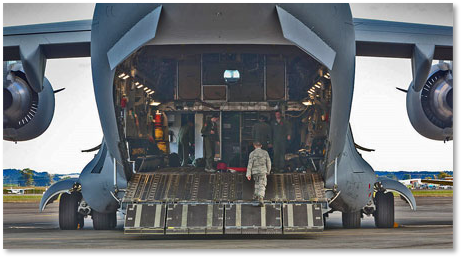
The New Zealand Defence Force may soon acquire at least two or four C-17s to replace its ageing C-130 Hercules fleet and Boeing 757 transport aircraft. Defence Minister Gerry Brownlee has reportedly requested a price quote for the massive Boeing C-17 Globemaster at the suggested cost per unit of $400 million.
According to Stuff.co, New Zealand First defence spokesperson Ron Mark has blasted the idea of replacing the Hercules fleet with the more expensive aircraft. He said there was "no way" the government could justify $2 billion to be spent on replacing New Zealand's Hercules fleet. Mark had assumed that each of New Zealand's five Hercules aircraft will be replaced with a new unit. Previous reports have noted that the C-17 aircraft has more space to carry a payload of more than four and a half times of Hercules.
According to Stuff.co, New Zealand First defence spokesperson Ron Mark has blasted the idea of replacing the Hercules fleet with the more expensive aircraft. He said there was "no way" the government could justify $2 billion to be spent on replacing New Zealand's Hercules fleet. Mark had assumed that each of New Zealand's five Hercules aircraft will be replaced with a new unit. Previous reports have noted that the C-17 aircraft has more space to carry a payload of more than four and a half times of Hercules.
Flightglobal reported that an "undisclosed customer" had placed an order for two of the 10 "white tail" C-17s Boeing under construction. Australia had publicly requested to purchase four of the planes in November as stated in the U.S. Defence Security Cooperation Acquisition notification. Boeing will be closing its C-17 production line in 2015.
In New Zealand's Defence Capability Plan released in June 2014, the defence department has identified a requirement to replace its fleet of C-130 Hercules and 757s in an effort to maintain the country's current range of capabilities. This is in line with the military's plan to continue providing strategic and tactical support for people and cargo including both low and high level missions, medical support and search and rescue capabilities, Australian Aviation reported.
In New Zealand's Defence Capability Plan released in June 2014, the defence department has identified a requirement to replace its fleet of C-130 Hercules and 757s in an effort to maintain the country's current range of capabilities. This is in line with the military's plan to continue providing strategic and tactical support for people and cargo including both low and high level missions, medical support and search and rescue capabilities, Australian Aviation reported.
Aside from a planned replacement of its Hercules fleet, the Royal New Zealand Air Force is also considering an upgrade on its six P-3K-2 Orions to gain improved underwater ISR capability in tracking and detecting underwater objects. According to the Defence Capability Plan, the project will complement the Missions Systems Upgrade focused on land and water capabilities.
The Royal Australian Air Force already owns and operates six C-17As while the UK has eight units. NATO-led Strategic Airlift Capability consortium owns three units with India having the largest C-17 fleet outside of the U.S. with its order of 10 C-17As.
International Business Times
The Royal Australian Air Force already owns and operates six C-17As while the UK has eight units. NATO-led Strategic Airlift Capability consortium owns three units with India having the largest C-17 fleet outside of the U.S. with its order of 10 C-17As.
International Business Times
From: David Anderson
Sent: Saturday, January 17, 2015 7:28 AM
Subject: Worst Load
Hi Tony,
Sent: Saturday, January 17, 2015 7:28 AM
Subject: Worst Load
Hi Tony,
I was stationed at RAF Salalah 1966ish. Working in POL. My stay coincided with the run down and closure of Khormaksar in Aden. During their closure there was a shortage of aviation fuel and it was decided to uplift avtur/avgas (in 45gall drums) from Salalah.
I was involved in preparing the loads in anticipation of Beverlies (may have been an Argosy) arriving to collect and return to Aden.
On one of the collections I understand that during the flight there was a leaking drum which had to be ditched. I wonder if any Movers recall this episode?
As a result of many unusual hours working on this project I received the AOCs Commendation and promotion, at least I think it was that and not the fact that I got rid of a leaking drum!
Best regards
Dave (Ginge) Anderson
(Ex Boy Entrant V1945245 44th Entry)
I was involved in preparing the loads in anticipation of Beverlies (may have been an Argosy) arriving to collect and return to Aden.
On one of the collections I understand that during the flight there was a leaking drum which had to be ditched. I wonder if any Movers recall this episode?
As a result of many unusual hours working on this project I received the AOCs Commendation and promotion, at least I think it was that and not the fact that I got rid of a leaking drum!
Best regards
Dave (Ginge) Anderson
(Ex Boy Entrant V1945245 44th Entry)
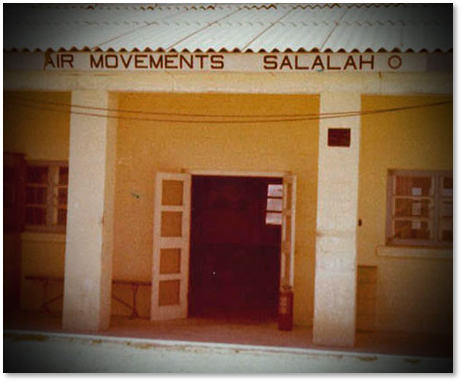
From: Robert Pountney, Forres, Moray
Sent: Saturday, January 17, 2015 5:56 AM
Subject: Worst load
Hi Tony,
Belated Happy New Year and hope it finds you keeping well.
Whilst not strictly a Movers type story but a load none the less my worst one was as follows. I was the duty Winchman on the SAR crew at Brawdy back in August 1983 when we took a call from a local Vet asking if we could help recover a bullock that had got himself stuck on a ledge on a small cliff just above the sea.
We got airborne in our trusty Sea King and were soon on scene. After a quick appraisal I was lowered onto the ledge and was joined by the vet and a local coastguard and between us we sedated the beast and managed to get him into a cargo net. An 80' strop was lowered from the hovering Sea King and the net was attached. As the load was about 15' above us the semi-comatose animal came to and decided flying wasn't for him and managed to struggle out of the net. He landed with a mighty thud on the ledge and then ran amok with we three attempted rescuers trying to keep out of his way and also slipping and sliding on the dung covered ledge. Eventually the beast calmed down enough for the Vet to administer a stronger dose and the lift was eventually carried out successfully to the relief of the waiting farmer and a thoroughly filthy threesome!
Sent: Saturday, January 17, 2015 5:56 AM
Subject: Worst load
Hi Tony,
Belated Happy New Year and hope it finds you keeping well.
Whilst not strictly a Movers type story but a load none the less my worst one was as follows. I was the duty Winchman on the SAR crew at Brawdy back in August 1983 when we took a call from a local Vet asking if we could help recover a bullock that had got himself stuck on a ledge on a small cliff just above the sea.
We got airborne in our trusty Sea King and were soon on scene. After a quick appraisal I was lowered onto the ledge and was joined by the vet and a local coastguard and between us we sedated the beast and managed to get him into a cargo net. An 80' strop was lowered from the hovering Sea King and the net was attached. As the load was about 15' above us the semi-comatose animal came to and decided flying wasn't for him and managed to struggle out of the net. He landed with a mighty thud on the ledge and then ran amok with we three attempted rescuers trying to keep out of his way and also slipping and sliding on the dung covered ledge. Eventually the beast calmed down enough for the Vet to administer a stronger dose and the lift was eventually carried out successfully to the relief of the waiting farmer and a thoroughly filthy threesome!
I don't know if you were at Masirah when a Beverley arrived with a load of mobile radio cabins on board which were an important part of an exercise which was about to take place and which had to be offloaded. Unfortunately the loading team had forgotten to ensure that the detachable wheels came with the load which was at the very front of the Beverley hold and was sitting flush on the floor! It's got to come off said the Loadie so get on with it.
There was no way a fork lift could reach it and no access under the cabin anyway so another plan was hatched. A flat bed trailer was reversed to the tailgate of the aircraft and the height adjusted to match the floor height. Chains were attached to the load, taken over the trailer and attached to a ten ton Bedford truck. Truck driver told to go like the clappers and the cabin was hauled, quick time, out onto the trailer. Job done! Well, unfortunately the cabin had caught some of the floor panels which now resembled rolled up sardine can lids much to the consternation of the Loadie. Luckily the Bev was on it's final task before going back to the UK for scrapping so no more was said and the exercise went ahead as planned. It was at this time that I realised that a Loadies job was far easier and I made my career change.
At some time I will tell you about my incident with a VC10 cargo door when I was a Loadie!
Regards
Bob
There was no way a fork lift could reach it and no access under the cabin anyway so another plan was hatched. A flat bed trailer was reversed to the tailgate of the aircraft and the height adjusted to match the floor height. Chains were attached to the load, taken over the trailer and attached to a ten ton Bedford truck. Truck driver told to go like the clappers and the cabin was hauled, quick time, out onto the trailer. Job done! Well, unfortunately the cabin had caught some of the floor panels which now resembled rolled up sardine can lids much to the consternation of the Loadie. Luckily the Bev was on it's final task before going back to the UK for scrapping so no more was said and the exercise went ahead as planned. It was at this time that I realised that a Loadies job was far easier and I made my career change.
At some time I will tell you about my incident with a VC10 cargo door when I was a Loadie!
Regards
Bob

From: Don Lloyd, Calgary, AB
Sent: Monday, January 19, 2015 6:00 PM
Subject: The Worst Load
Hi Tony,
The three worst loads I ever carried in my flying career, in no specific order (to find dates and others with me I would have to go into my archives. If someone does get back to me I would do that for more details for them).
1. A load of 26 large & small pieces of wicker lawn furniture we picked up on a world trainer in New Delhi, India, for return to Ottawa for placement at the Governor General’s back yard garden area. Trying to secure it and not crush it was a feat of “magic”.
2. Another load we picked up was the remaining bits and pieces (large and small) of three Japanese Zeros and a Val Dive Bomber that had been dragged out of the jungle, put on barges and then trucked to an airport at Port Moresby, PNG. They had been in the jungle since World War II and were a filthy sharp-edged pile of metal. This was done for a man named Bob Diemert of Carmen Field, Carmen, Manitoba. He was a restoration expert and did put one Zero back to flying condition and flew it to Ottawa and donated it to the air museum.
3. The last and worst loads of all were Formula Ten Corn Meal, and Dry Salted Cod Fish. This stuff was loaded during the day from a dockside warehouse in Fernando Poo, Nigeria. It had been in the warehouse for quite some time and stunk like heck; not to mention the creepy-crawly things that were all over the sacks of fish. It was so bad that to open up the aircraft and get to the ramp and door area we had to wear an oxygen mask to get from front to back. We were flying at night into an area called Biafra to supposedly feed the women and children while the men were off to war. We made, I believe, three trips before it was stopped.
Cheers for now,
Don
Sent: Monday, January 19, 2015 6:00 PM
Subject: The Worst Load
Hi Tony,
The three worst loads I ever carried in my flying career, in no specific order (to find dates and others with me I would have to go into my archives. If someone does get back to me I would do that for more details for them).
1. A load of 26 large & small pieces of wicker lawn furniture we picked up on a world trainer in New Delhi, India, for return to Ottawa for placement at the Governor General’s back yard garden area. Trying to secure it and not crush it was a feat of “magic”.
2. Another load we picked up was the remaining bits and pieces (large and small) of three Japanese Zeros and a Val Dive Bomber that had been dragged out of the jungle, put on barges and then trucked to an airport at Port Moresby, PNG. They had been in the jungle since World War II and were a filthy sharp-edged pile of metal. This was done for a man named Bob Diemert of Carmen Field, Carmen, Manitoba. He was a restoration expert and did put one Zero back to flying condition and flew it to Ottawa and donated it to the air museum.
3. The last and worst loads of all were Formula Ten Corn Meal, and Dry Salted Cod Fish. This stuff was loaded during the day from a dockside warehouse in Fernando Poo, Nigeria. It had been in the warehouse for quite some time and stunk like heck; not to mention the creepy-crawly things that were all over the sacks of fish. It was so bad that to open up the aircraft and get to the ramp and door area we had to wear an oxygen mask to get from front to back. We were flying at night into an area called Biafra to supposedly feed the women and children while the men were off to war. We made, I believe, three trips before it was stopped.
Cheers for now,
Don
From: Mike Stepney, Glasgow
Sent: Monday, January 19, 2015 6:26 PM
Subject: The Worst Load
Sent: Monday, January 19, 2015 6:26 PM
Subject: The Worst Load
My (and perhaps Kai Tak's) Worst load - Circa 1990
In Hong Kong early 90’s the British Government representative received a request from a certain US security agency, to handle the shipment by air of a number of large containers - these were approximately 40 foot in length and overall similar dimensions to a sea-going container. However, no actual dimensions or weights were available. These items were sited on various mountain summits overlooking China. Over a period of approximately six months, I eventually managed to visit the various sites and measure the containers and set up the task with 1 Group. The items were very well hidden near mountain tops in the New Territories overlooking China, and were located far from normal roads and habitation - literally in the middle of nowhere! Moving these items and loading to the aircraft was not going to be easy.
For security reasons, the loads could not be accommodated overnight at Kai Tak and the task called for a single day operation covering driving the load from the mountain, weighing the load on a weighbridge en-route, re-weighing the empty low-loader after delivery, thereby identifying the actual weight, then prepping for loading to the C130. There was still the matter of calculating the CoG to complete a True-Trim, then the actual loading and tie-down to be considered.
For security reasons, the loads could not be accommodated overnight at Kai Tak and the task called for a single day operation covering driving the load from the mountain, weighing the load on a weighbridge en-route, re-weighing the empty low-loader after delivery, thereby identifying the actual weight, then prepping for loading to the C130. There was still the matter of calculating the CoG to complete a True-Trim, then the actual loading and tie-down to be considered.
After further negotiation with the ‘customer’ they authorised an overnight stop at Kai Tak but only if the aircraft had been loaded and secured, and suitable military guards were present to ensure security. We managed to get round the guarding issue by utilising some members of the RAF P&SS detachment, who were more used to spending their time monitoring female international cabin staff arriving and departing Kai Tak!
The aircraft initially tasked on the Transop from its Ascot call-sign was clearly a Mk 3…., and this after we had specifically requested a Mk 5. Full details of the reasons for the Mk 5 requirement were included on the initial request to 1 Group, but they appeared to ignore our requirement. A few priority signals were dispatched warning of the issues if they dispatched a Mk 3 and eventually they agreed and a Mk 5 was allotted. As the load had no tie-down points, we had decided that even without knowing the final weight of the freight, we would be faced with up to a triple neckless tie down scheme. In additional, we had requested additional dunnage and a fully working winch - the winch being the cornerstone for the loading task.
The aircraft initially tasked on the Transop from its Ascot call-sign was clearly a Mk 3…., and this after we had specifically requested a Mk 5. Full details of the reasons for the Mk 5 requirement were included on the initial request to 1 Group, but they appeared to ignore our requirement. A few priority signals were dispatched warning of the issues if they dispatched a Mk 3 and eventually they agreed and a Mk 5 was allotted. As the load had no tie-down points, we had decided that even without knowing the final weight of the freight, we would be faced with up to a triple neckless tie down scheme. In additional, we had requested additional dunnage and a fully working winch - the winch being the cornerstone for the loading task.
The Mk 5 arrived at Kai Tak on schedule at around 20:00hrs on the evening prior to loading however, on checking the items on board we found no extra chains/tensioners, no extra dunnage, and most worryingly, no hook for the winch! Great start! The Loadmaster was adamant that the winch hook was there when they left Lyneham, but could not explain how it had disappeared en-route. As the load was arriving the next morning, we now had a task of borrowing/stealing chains, tensioners, dunnage etc. from around Kai Tak which, although a large commercial air-freight forwarding terminal, did not normally utilise chains and tensioners - cans were used for small/medium freight and strops for the larger items. As for using the aircraft winch, that was now a non-starter, so we had to design an alternative loading strategy.
The load arrived the following day at 10:00hrs with details of the total all-up weight documented. All we required now was for the driver to return to the weigh-bridge with his empty low-loader, re-weigh, then telephone us with the details.
The load arrived the following day at 10:00hrs with details of the total all-up weight documented. All we required now was for the driver to return to the weigh-bridge with his empty low-loader, re-weigh, then telephone us with the details.
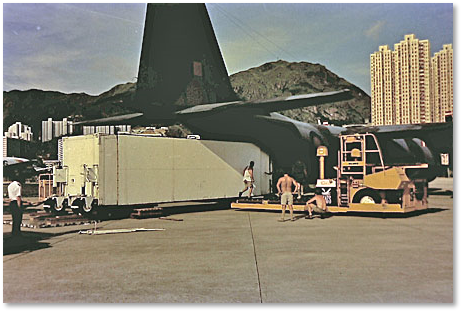
While we had the crane on site (only a short window was allowed for the crane to be operating in the aircraft manoeuvring area), we managed to get the load onto some dunnage and after a few tries, found the CofG. By this time we had overrun our slot and air traffic was getting somewhat verbal in its endeavour to have the crane dispatched from the pan toot sweet.
When initially viewing the loads on the various mountain tops, the ‘customer’ had advised that the container came with removable corner jacks and wheels with pneumatic tyres; these he said were what they normally used for moving the containers on flat ground.
At the time this was deemed good news and we originally estimated we could load the aircraft in around two/three hours utilising the aircraft winch however, without the hook this plan was now a non-starter.
When initially viewing the loads on the various mountain tops, the ‘customer’ had advised that the container came with removable corner jacks and wheels with pneumatic tyres; these he said were what they normally used for moving the containers on flat ground.
At the time this was deemed good news and we originally estimated we could load the aircraft in around two/three hours utilising the aircraft winch however, without the hook this plan was now a non-starter.
We tried offering the load to the aircraft ramp utilising the container wheels…, not a chance! The wheels may have been OK for towing the container in a general straight line, but they were too unpredictable for manoeuvring near an aircraft. Eventually we received the empty vehicle weight detail and managed to calculate the true weight, which turned out to be just over 24,000lbs. The container had a number of items of equipment installed within and although I had had an opportunity to view the contents, we had no idea of individual equipment weights, therefore the solution was to find the CofG, and complete a True Trim exercise. We now commenced loading.
Even with copious amounts of (borrowed) dunnage and hydraulic jacks and a Fork Lift Truck the first few attempts to load were unsuccessful. The load was so tight - 40Ft + 20ins overhang (mobility wheels) and wide, (approx. 112 inches), and high (96 inches) and heavy (10 tons) that it was in danger of connecting with the aircraft sides and the roof stringers.
Even with copious amounts of (borrowed) dunnage and hydraulic jacks and a Fork Lift Truck the first few attempts to load were unsuccessful. The load was so tight - 40Ft + 20ins overhang (mobility wheels) and wide, (approx. 112 inches), and high (96 inches) and heavy (10 tons) that it was in danger of connecting with the aircraft sides and the roof stringers.
The worst load I ever handled was in 1975 and I was on my last tour before demob at RAF Waddington. In the Supply Squadron I was responsible for the V-Bomber Fly Away Packs and any Air Movements that happened to pop in.
One afternoon we had a civilian DC3 diversion that was u/s with a load of ponies that were en route to France where they were to be butchered. These animals had not had any food or water for some considerable time although that did not stop them from crapping all over the aircraft.
The DC3 was poorly maintained and appeared to be on its last legs. The ponies were saved by the intervention of the RSPCA but it took ages for the Inspector to arrange for transport to take the animals to a farm willing to accept them.
To crown it all, after the aircraft was made airworthy again the crew tried to bribe me into supplying lashings. As I said already, it was the worst load ever.
Best regards
Chas 43rd
One afternoon we had a civilian DC3 diversion that was u/s with a load of ponies that were en route to France where they were to be butchered. These animals had not had any food or water for some considerable time although that did not stop them from crapping all over the aircraft.
The DC3 was poorly maintained and appeared to be on its last legs. The ponies were saved by the intervention of the RSPCA but it took ages for the Inspector to arrange for transport to take the animals to a farm willing to accept them.
To crown it all, after the aircraft was made airworthy again the crew tried to bribe me into supplying lashings. As I said already, it was the worst load ever.
Best regards
Chas 43rd
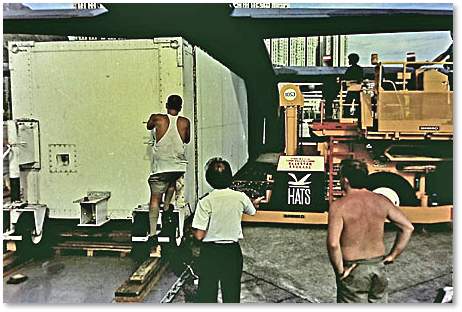
Utilising cargo pallet loaders, fork-lift tricks and various other methods of persuasion, together with a couple of 7 ton pallet/can side-loaders the load crept over the ramp, but very little further. Monitoring loading was extremely difficult and being only an inch or so off-true from the rear of the aircraft meant the container would not load past the wheel well area. However, with much manoeuvring over a period of eight hours the container was eventually (inch by inch) loaded onto the aircraft.
Ten hours after the arrival the container was now tied down, trim completed, and a very tired RAFAPU team retired to the bar for some refreshments. WO Chas Cormack and Pete Polidano (a sergeant at the time), proved just what can be done with determination and flexibility. As an aside, when we checked the True Trim on a Mk 3 trim sheet, it would have been over 40 inches out! The Mk 5 had given us that bit of flexibility required to complete the load. We had gone through loading Plan A, B, C, D E and eventually settled for plan F!
Ten hours after the arrival the container was now tied down, trim completed, and a very tired RAFAPU team retired to the bar for some refreshments. WO Chas Cormack and Pete Polidano (a sergeant at the time), proved just what can be done with determination and flexibility. As an aside, when we checked the True Trim on a Mk 3 trim sheet, it would have been over 40 inches out! The Mk 5 had given us that bit of flexibility required to complete the load. We had gone through loading Plan A, B, C, D E and eventually settled for plan F!
We accompanied the load to its destination and the offload took less than two hours, the time consuming work was removing all the chains and tensioners in the very limited space on the aircraft. Two 40K Condecs were awaiting the load and once I had a signature, we were off back to Kai Tak - worst load ever… but Job Done!
This was the first of three of these particular loads that we undertook during my time at Kai Tak; the second about six months later resulted in a stand-off between SAMO Kai Tak and the Captain of a Heavy Lift Belfast contracted to move the load. The Captain decided unilaterally to depart the destination airfield outside of the planned itinerary and leave two of the Kai Tak movers behind 1,500 miles from Hong Kong. Another tale for another time!
This was the first of three of these particular loads that we undertook during my time at Kai Tak; the second about six months later resulted in a stand-off between SAMO Kai Tak and the Captain of a Heavy Lift Belfast contracted to move the load. The Captain decided unilaterally to depart the destination airfield outside of the planned itinerary and leave two of the Kai Tak movers behind 1,500 miles from Hong Kong. Another tale for another time!
From: Gerry Davis, Bedminster
Sent: Tuesday, January 20, 2015 4:16 AM
Subject: Working Christmas in RAF
Sent: Tuesday, January 20, 2015 4:16 AM
Subject: Working Christmas in RAF
From: Gus Turney, Chippenham
Sent: Wednesday, January 21, 2015 11:45 AM
Subject: Worst Load
Dear Tony,
Firstly, happy 2015 to all that know me, and secondly, thank you for doing such a top job running the website; it is much appreciated.
Worst load... hmmm. Well, the Tornado GSE combination of Mk.11 Hydraulic Rig and 48 kva was always good for a laugh onto a C-130 (especially if you were missing a bottle jack... that's another story).
Tight loads, such as tracked Rapier, or Puma fuselage, could also prove awkward if not aligned properly. Another favourite, albeit a rare one, concerned the VC-10 vent door. Usually, we would meet the aircraft for a quick turnaround, expecting to load baggage into the rear hold through the small ventral door, as was the norm. Occasionally, the door would be frozen solid, and no amount of hitting would budge it. The only solution was to load all the baggage through the rear hold door, and push it "uphill". A good physical workout, if nothing else.
I'm sure everyone has a story concerning walking freight. Whilst employed at Kai Tak, I personally must have spent hours trawling the terminal, looking for service passengers booked onto the BA charter, who, despite being briefed to get to the departure gate at a certain time, would have "just one more drink", or browse the duty free shop for last minute tat. Luckily, British Airways were very understanding, and no flights were delayed on my watch, but there were a few close calls!
Sent: Wednesday, January 21, 2015 11:45 AM
Subject: Worst Load
Dear Tony,
Firstly, happy 2015 to all that know me, and secondly, thank you for doing such a top job running the website; it is much appreciated.
Worst load... hmmm. Well, the Tornado GSE combination of Mk.11 Hydraulic Rig and 48 kva was always good for a laugh onto a C-130 (especially if you were missing a bottle jack... that's another story).
Tight loads, such as tracked Rapier, or Puma fuselage, could also prove awkward if not aligned properly. Another favourite, albeit a rare one, concerned the VC-10 vent door. Usually, we would meet the aircraft for a quick turnaround, expecting to load baggage into the rear hold through the small ventral door, as was the norm. Occasionally, the door would be frozen solid, and no amount of hitting would budge it. The only solution was to load all the baggage through the rear hold door, and push it "uphill". A good physical workout, if nothing else.
I'm sure everyone has a story concerning walking freight. Whilst employed at Kai Tak, I personally must have spent hours trawling the terminal, looking for service passengers booked onto the BA charter, who, despite being briefed to get to the departure gate at a certain time, would have "just one more drink", or browse the duty free shop for last minute tat. Luckily, British Airways were very understanding, and no flights were delayed on my watch, but there were a few close calls!

But the load that sticks in my mind was in April 1984, and concerned a mix of Army MFO boxes and a u/s Rolls Royce Conway engine. Three of us (Me, Dibs Loveridge, and a holding F/O, Dave Orr) were tasked to support an East Africa trainer, calling at Iraklion, Nairobi, Lusaka, Mombasa, Seychelles, Bahrain, and back to Lyneham via Athens."What a nice trip", we thought. In Nairobi, we loaded 2 large stacks of MFO flat floor.
At Bahrain, we were to backload the Conway. It soon became clear, that the only way to trim the Herc, was to put the engine up front, and reload the boxes behind it. So, with the rest of the crew gone, and already probably relaxing with a beer, it was left to the three of us to offload all the boxes, winch the engine into position, restrain it, and then re-load all the MFO behind the Conway. We also completed the trim sheet (we had 2 Loadies on the trip, by the way, who made no offer to help).
Some hours later, we got to the Ramada Hotel, in our romper suits, filthy, sweaty, knackered, hungry and thirsty. We bumped into one of the crew, who asked innocently, "You only just finished then?" I don't recall what our reply was. Nobody said life on MAMS was all relaxing by pools sipping margaritas. You just took the rough with the smooth. The good trips more than made up for the crappy ones, and I wouldn't have swapped my time on MAMS for anything. Good people, and good times!
At Bahrain, we were to backload the Conway. It soon became clear, that the only way to trim the Herc, was to put the engine up front, and reload the boxes behind it. So, with the rest of the crew gone, and already probably relaxing with a beer, it was left to the three of us to offload all the boxes, winch the engine into position, restrain it, and then re-load all the MFO behind the Conway. We also completed the trim sheet (we had 2 Loadies on the trip, by the way, who made no offer to help).
Some hours later, we got to the Ramada Hotel, in our romper suits, filthy, sweaty, knackered, hungry and thirsty. We bumped into one of the crew, who asked innocently, "You only just finished then?" I don't recall what our reply was. Nobody said life on MAMS was all relaxing by pools sipping margaritas. You just took the rough with the smooth. The good trips more than made up for the crappy ones, and I wouldn't have swapped my time on MAMS for anything. Good people, and good times!
Regards to all,
Gus (Lima Team, 83-85)
Gus (Lima Team, 83-85)
Antarctic emergency landing report due
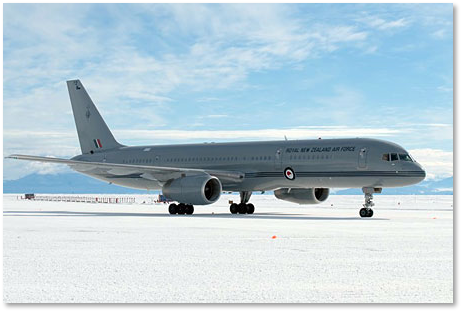
The results on an inquiry into an emergency landing in Antarctica by an RNZAF aircraft with Foreign Affairs Minister Murray McCully on board are to be released. The Transport Accident Investigation Commission will today publish its report into the October 2013 landing at Pegasus Field.
Mr McCully was among 117 passengers and 11 RNZAF crew on board. It was his first visit to New Zealand's Scott Base on Ross Island. He later said the landing was "pretty scary", but he praised the pilot and crew for getting them down safely.
At the time the air force said that when the pilot reached the point of no return the weather conditions at the destination were suitable for a landing, but they deteriorated about 30 minutes later.
The aircraft circled for about two-and-a-half hours in the hope the weather would clear but was eventually forced to land when its fuel ran low.
Mr McCully was among 117 passengers and 11 RNZAF crew on board. It was his first visit to New Zealand's Scott Base on Ross Island. He later said the landing was "pretty scary", but he praised the pilot and crew for getting them down safely.
At the time the air force said that when the pilot reached the point of no return the weather conditions at the destination were suitable for a landing, but they deteriorated about 30 minutes later.
The aircraft circled for about two-and-a-half hours in the hope the weather would clear but was eventually forced to land when its fuel ran low.
Airbus chief Enders promises action on A400M
Airbus chief executive Tom Enders has promised “management and organisational consequences” as a result of the production and delivery problems that are affecting the company’s A400M tactical transport programme. “We have problems - I admit that,” Enders said while addressing an Airbus Group reception in London on 27 January. “We have additional delays and I very much regret that we are unable to meet the commitments made to our customers several years ago. We are taking corrective action as fast as we can,” he says, adding that the issue will have “management and organisational consequences”.
Airbus is unable to achieve the terms required for the UK Royal Air Force to declare initial operational capability with the A400M Atlas in March as scheduled. The milestone will be achieved with the availability of seven aircraft and trained crews, but so far just one has been transferred to the service’s Brize Norton base in Oxfordshire. A second is having its defensive aids system equipment installed in Spain, having been accepted in late 2014.
“I hope that in 2015 this will grow to seven aircraft at least,” Enders says, adding: “we will do what we can to get out of this situation.” The RAF will eventually have a 22-strong fleet of the type, with the last example scheduled for delivery during 2018.
Airbus failed to achieve its planned delivery totals for the A400M in 2013 and 2014, with a combined 11 having been handed over to customers by the end of last year - three fewer than initially scheduled. The company had expected to increase the rate of work on its San Pablo final assembly line in Seville to deliver 23 of the aircraft in 2015, but early this year said that this is now being reviewed. Production and acceptance issues are believed to be linked to delays with introducing planned additional operating capabilities to the A400M.
Details of a recovery plan and expected delivery schedule for this year - which must be agreed by the programme’s seven launch nations via Europe’s OCCAR procurement agency - could emerge before Airbus presents its annual results in Munich on 27 February.
FlightGlobal
Airbus is unable to achieve the terms required for the UK Royal Air Force to declare initial operational capability with the A400M Atlas in March as scheduled. The milestone will be achieved with the availability of seven aircraft and trained crews, but so far just one has been transferred to the service’s Brize Norton base in Oxfordshire. A second is having its defensive aids system equipment installed in Spain, having been accepted in late 2014.
“I hope that in 2015 this will grow to seven aircraft at least,” Enders says, adding: “we will do what we can to get out of this situation.” The RAF will eventually have a 22-strong fleet of the type, with the last example scheduled for delivery during 2018.
Airbus failed to achieve its planned delivery totals for the A400M in 2013 and 2014, with a combined 11 having been handed over to customers by the end of last year - three fewer than initially scheduled. The company had expected to increase the rate of work on its San Pablo final assembly line in Seville to deliver 23 of the aircraft in 2015, but early this year said that this is now being reviewed. Production and acceptance issues are believed to be linked to delays with introducing planned additional operating capabilities to the A400M.
Details of a recovery plan and expected delivery schedule for this year - which must be agreed by the programme’s seven launch nations via Europe’s OCCAR procurement agency - could emerge before Airbus presents its annual results in Munich on 27 February.
FlightGlobal
From: Steve Richardson, Trenton, ON
Sent: Tuesday, December 16, 2014 6:21 PM
Subject: How to start a Herc in the cold
Sent: Tuesday, December 16, 2014 6:21 PM
Subject: How to start a Herc in the cold
From: Mick Craner, Yeovil, Somerset
Sent: Monday, January 26, 2015 6:16 AM
Subject: Worst Loads
Guday Tony,
I am at a loss as to what my worst load would be.
1. Would be the coffins of four Brave Soldiers, on a Hastings, out of Kuching, during the Indonesian Confrontation, it was not classed as a war although the enemy was using live ammunition!
2. A Hercules out of Lajes, the load was a u/s engine from a Phantom, all signed up by the Rolls- Royce engineers as fit for air freight, all systems drained. On take off the engine spewed out an estimated 40 litres of jet fuel.
3. This involved the movement of pax out of Karachi who were to be new employees at Gan. Two men lit a portable stove on the wooden floor of the a/c on which they had a pot of curry.
There are others involving vehicles, arms and ammunition, hazardous, V&A cargo, not forgetting the fun we had when parachuting and supply dropping.
Would I do it all again? YES PLEASE!
Regards, Mick Craner.
Sent: Monday, January 26, 2015 6:16 AM
Subject: Worst Loads
Guday Tony,
I am at a loss as to what my worst load would be.
1. Would be the coffins of four Brave Soldiers, on a Hastings, out of Kuching, during the Indonesian Confrontation, it was not classed as a war although the enemy was using live ammunition!
2. A Hercules out of Lajes, the load was a u/s engine from a Phantom, all signed up by the Rolls- Royce engineers as fit for air freight, all systems drained. On take off the engine spewed out an estimated 40 litres of jet fuel.
3. This involved the movement of pax out of Karachi who were to be new employees at Gan. Two men lit a portable stove on the wooden floor of the a/c on which they had a pot of curry.
There are others involving vehicles, arms and ammunition, hazardous, V&A cargo, not forgetting the fun we had when parachuting and supply dropping.
Would I do it all again? YES PLEASE!
Regards, Mick Craner.
From: Mike Stephen, Victoria, BC
Sent: Wednesday, January 28, 2015 7:40 PM
Subject: Worst load
Tony,
On April 27 1985 a crew from 435 Sqn in Edmonton were tasked to depart for Fort Chimo (now Kuujjuaq) in Northern Quebec. With Claude Castonguay as the other Loadie we arrived at Kuujjuaq midst a flurry of activity.
Apparently there was a huge migration of Caribou that drowned in a river outside Kuujjuaq and were deemed an environmental hazard. The Mulroney Government wanted them airlifted out a.s.a.p.
MAMS teams were brought in from CFB Trenton as well as more C-130s. At that time the Caribou were brought into a staging area were the buildup was being done on 88" x 48" pallets. We could take 9 Palletts on each lift. MAMS teams were using chain saws to square up the loads - so there was quite a mess as you could imagine.
Sent: Wednesday, January 28, 2015 7:40 PM
Subject: Worst load
Tony,
On April 27 1985 a crew from 435 Sqn in Edmonton were tasked to depart for Fort Chimo (now Kuujjuaq) in Northern Quebec. With Claude Castonguay as the other Loadie we arrived at Kuujjuaq midst a flurry of activity.
Apparently there was a huge migration of Caribou that drowned in a river outside Kuujjuaq and were deemed an environmental hazard. The Mulroney Government wanted them airlifted out a.s.a.p.
MAMS teams were brought in from CFB Trenton as well as more C-130s. At that time the Caribou were brought into a staging area were the buildup was being done on 88" x 48" pallets. We could take 9 Palletts on each lift. MAMS teams were using chain saws to square up the loads - so there was quite a mess as you could imagine.
Hi Tony,
CFS Alert is about 450 miles from the North Pole (Santa's house). These RCAF Traffic Technicians have a great way to stay warm while starting the engines of the C-130 Hercules!
Cheers
Steve Richardson
CFS Alert is about 450 miles from the North Pole (Santa's house). These RCAF Traffic Technicians have a great way to stay warm while starting the engines of the C-130 Hercules!
Cheers
Steve Richardson
A tad late for Christmas but worth a listen... Martin Clunes recites "Percy Prune's Christmas", an RAF Flight Safety poem:

The Government had a contract with a company in Montreal that produced dog food. It was a 3-hour trip to St. Hubert (Montreal) - the cargo compartment was without heat for the trip. Time has erased some details, but I think this operation went around the clock for 10 days. Exact numbers of Caribou moved were estimated at 4,000.
Mike Stephen
Mike Stephen
From: Stephen Bird, Chester
Sent: Friday, January 23, 2015 5:55 AM
Subject: The Worst Load
Well for me it’s got to be 3 full size living Christmas trees “mit” root balls encased in soil which we back loaded onto 3 Hercules out of Gutersloh in the mid 80’s. Each tree was about 40/50ft upright and they were donated by the people of Germany to the people of the UK.
Somewhere along the line somebody high up thought it was good PR to have them flown into the UK by the good old RAF. You have never seen so much mess on an aircraft in all your life. There was soil and mud everywhere even with a floor protection kit all the floor points were packed with mud, the Loady was having kittens and it took us hours to complete!
Regards
Steve
Sent: Friday, January 23, 2015 5:55 AM
Subject: The Worst Load
Well for me it’s got to be 3 full size living Christmas trees “mit” root balls encased in soil which we back loaded onto 3 Hercules out of Gutersloh in the mid 80’s. Each tree was about 40/50ft upright and they were donated by the people of Germany to the people of the UK.
Somewhere along the line somebody high up thought it was good PR to have them flown into the UK by the good old RAF. You have never seen so much mess on an aircraft in all your life. There was soil and mud everywhere even with a floor protection kit all the floor points were packed with mud, the Loady was having kittens and it took us hours to complete!
Regards
Steve
From: Mike Jones
Sent: Wed, 28 Jan 2015 19:25
Subject: Container Loading - Wow!
Sent: Wed, 28 Jan 2015 19:25
Subject: Container Loading - Wow!
This reminds me of my days at Sharjah, when all we had was a 6,000lb fork lift and a 10 ton lorry and had to offload Bevs loaded by Muharraq, who had all the modern handling aids.
Health and Safety twits would have died on the spot if they'd seen some of the things we got up to!
Mike Jones
Health and Safety twits would have died on the spot if they'd seen some of the things we got up to!
Mike Jones

This newsletter is dedicated to the memories of Dave Eggleton and those who have gone before
